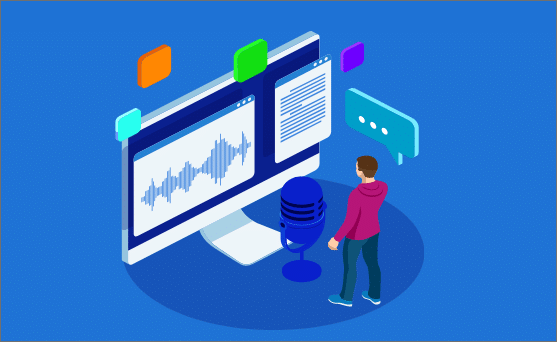The marketing world has become hyper in promoting Text-to-Speech (TTS) tech in their portals, especially on social media platforms. They consider it a tried and tested strategy for reaching their target audience with an expected global market growth of around 5.0 billion by 2026 according to a blog featured in HR Future Magazine.
The same content delivery could also be effective when used in webinars or skills training programs. Given employees’ busy schedules, especially those with heavy workloads, engaging training materials are essential. Text-to-speech technology can enhance training by making it more accessible and accommodating diverse learners.
Converting generally text-based training materials into spoken words with AI in text-to-speech ensures employees can benefit and have equal access to valuable materials and information. This will also promote inclusion, especially for staff with visual impairments, dyslexia, or other conditions which make reading challenging.
How can TTS benefit workplaces?
With over 280 million people affected by visual impairments, text-to-speech solutions can bridge this gap in the workplace by providing accessible training audio materials for all employees. They can help in the following ways:
For a multilingual workforce – especially if you have offshore branches or remote staff all over the world, TTS can automatically provide audio for your training and translate all your textual or written materials into multiple languages. It can also effectively assist non-English speakers to grasp, retain, and respond better to training.
Enhances employee engagement – some employers may find it challenging to engage their employees during training; it may be because of familiarity or the heavily textual presentation materials. Using AI-driven TTS may break the ice and do the trick of capturing and enhancing employee training engagement with more dynamic materials.
TTS can infuse excitement and intrigue – appealing to different employee learning styles.
TTS is interactive – it effectively makes instruction materials more interactive by including many voice prompt choices with feedback applications. Its interactive features can help keep trainees more engaged with listening compared to the age-old text-only materials.
TTS offers variety – listening to training audios can add variety to your employees’ skills enhancement program, making training more relevant and effective compared to the monotony of textual reading materials.
Supports comprehension and retention – the more people you have to train, especially if connected across countries and continents, the more comprehension and retention become your challenge. But AI’s text-to-speech offers the opportunity to deliver a more impactful message and learning experience to all employees.
Studies show that listening to information repeatedly helps improve understanding and retention. That’s why TTS is used not only for translating written texts into audiovisual materials but also for providing content that employees can replay at their convenience, which improves recall and reinforces learning.
How can it improve retention?
A supplementary learning tool – addressing the many learning adaptabilities, employees can choose what part of the material to listen to, like summaries and key points. This will help them grasp more essential points or information in your training material.
Boosts company productivity – a smartphone can be your training venue. With TTS as your training tool, you can keep your employees on the training loop wherever they are and when they are most available so as not to jeopardize work times.
AI-driven text-to-speech tech can streamline content creation and delivery, providing a more personalised, highly effective, and engaging overall trainee experience.
What are its advantages?
Efficient use of time – employees can listen to your TTS-converted training materials practically anywhere, during commutes, or while on call for other tasks.
On-demand learning – the effective conversion of your textual training materials to audio, and sometimes with visual content, helps employees benefit from them, especially learning at their own pace.
Facilitates remote training – With the rise of remote work, TTS offers effective audiovisual training in any language, ensuring your materials are consistent, well-translated, engaging, and accessible anywhere.
Enhances content creation and delivery – TTS technology transforms content creation and delivery in many remarkable ways, making it more efficient and effective for all your staff, such as;
AI-driven text-to-speech tech can streamline content creation and delivery, providing a more personalised, highly effective, and engaging overall trainee experience.
How it can help content creation?
Efficient content development – it can automatically generate spoken content from your written materials, saving time, money, and effort.
Customization and personalisation – with its extensive voice data, TTS can help you tailor the voice of your text reader to match your branding and style, making your trainees more engaged.
Multimedia integrations – TTS helps provide perfectly translated voiceovers for your videos and other training presentations.
Promotes inclusivity with AI-driven TTS – it’s best to maximise the use of Text-to-Speech assistive applications to benefit your employees in many ways, such as:
Inclusive training environment – when AI translates all your written texts into audiovisual presentations, it makes sure that all your employees can understand, relate, and participate.
Cognitive load reduction – TTS applications provide trainees with audio options to reduce cognitive load (or overload), especially for those who find it hard to digest too many texts.
The full blog can be found here.





